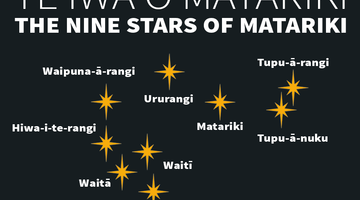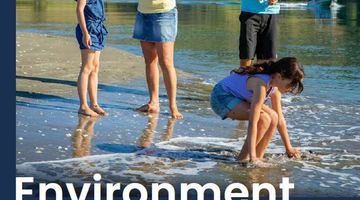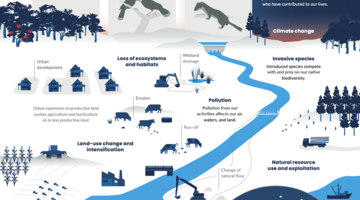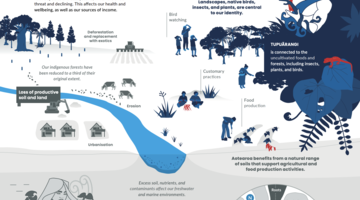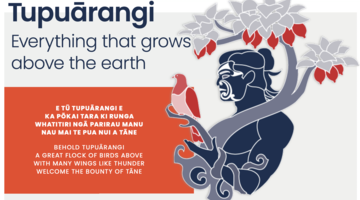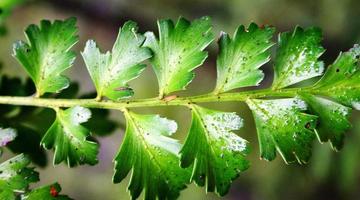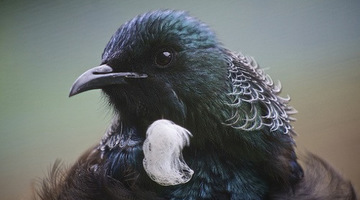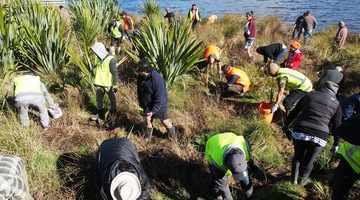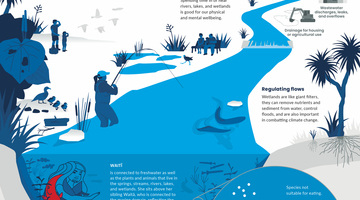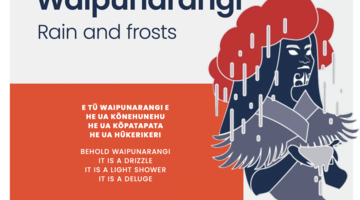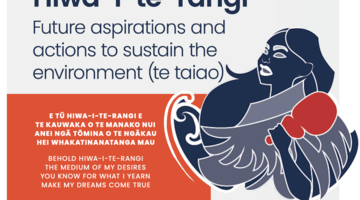Click to add note
An explanation of the star cluster, Matariki and te maramataka Māori.
The introductory article explains the Matariki framework. It explains how Matariki represents a sign of wellbeing. It also curates the individual articles of the Matariki star cluster whetū and their environmental domains.
Use this infographic to explore the stars and their connections to environmental domains.
Remember you can download a PDF version too.
Click to add note
This activity uses online and/or paper-based resources to identify and label the nine whetū in Matariki and learn about their associations with wellbeing and the environment.
Pōhutukawa represents the species and ecosystems that we have lost and are at risk of losing. She also represents the appreciation and duty of care we have for te taiao (the environment).
Click to add note
Use this infographic to discuss the pressures we are putting on the environment.
What do the words lost, cumulative and legacy mean?
Exploring and acting on our duty of care is an ideal context for educators wishing to develop a local curriculum and/or embed mātauranga Māori into the science classroom. This recorded webinar offers practical support and resources.
Tupuānuku represents soil quality – the health of our soils and the different ways in which this affects our wellbeing. Te taiao (the environment) is interconnected – when we put pressure on our soils, this affects other environmental domains including freshwater and marine environments.
What plants do you think are represented in this image?
How does soil help things become lush, and abundant?
Tupuānuku and Tupuārangi are closely connected. Why do you think some of the plants and animals are red while others are blue and some are merely outlines?
This intro article links to the basics of soils, including easy-to-use activities.
This intro article has links to land use impacts, management and ethics.
Click to add note
How does this image represent food and growth above the ground?
What species are represented in this image?
This is a curation of articles, activities and media. It also includes an interactive planning pathway that groups Hub resources into key science and teaching concepts: https://www.sciencelearn.org.nz/resources/2722-new-zealand-native-trees-an-introduction
This is a curation of our extensive resources on Aotearoa's beautiful and quirky native manu.
This article contains helpful pedagogical information when teaching about conservations. It also includes an interactive planning pathway that groups resources into key science and teaching concepts: https://www.sciencelearn.org.nz/resources/2810-conservation-resources-planning-pathways
Click to add note
How does this image reflect our connections to freshwater?
If you were drawing an image to reflect the fresh water system in your local area, which aspects and/or species would you include?
Click to add note
Click to add note
How does this image represent the moana?
What types of kaimoana do you recognise?
Compare the image in the lower left hand side of the infographic with the image in the lower right hand side. How does the infographic portray species decline and loss?
Click to add note
How does this image represent different types of rainfall?
Are there elements of the whakataukī that mirror the personification of Waipuarangi?
Click to add note
Winds and the atmosphere are matangaro – an invisible phenomenon.
Can you visualise different types of winds in this image?
This infographic looks at atmospheric conditions, their connections to our wellbeing and the impacts our actions have on these environmental domains.
Click to add note
Click to add note
Click to add note
Click to add note

